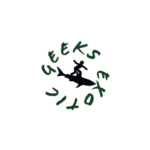Keeping Exotic Animals in Natural Style Enclosures
The allure of exotic animals in our homes is undeniable. However, their well-being depends on more than just providing food and shelter. Natural style enclosures, designed to mimic their native habitats, are revolutionizing exotic animal husbandry. In this article, we will explore the methods, reasons, and numerous benefits of creating these bioactive, plant-filled habitats, not just for the animals but for enthusiasts as well.
Why Natural Style Enclosures?
-
- Mimicking Natural Habitat: Exotic animals thrive when their environment resembles their native home. Natural enclosures provide the familiar sights, smells, and textures they need for psychological comfort.
-
- Behavioral Enrichment: Bioactive setups encourage natural behaviors such as climbing, burrowing, and foraging. These activities stimulate the animal mentally and physically, promoting overall well-being.
-
- Enhanced Aesthetics: Natural enclosures are not just functional; they are beautiful to behold. Lush plants, vibrant substrates, and the presence of small insects create a mini ecosystem that appeals to the eye and soul.
How to Create Natural Style Enclosures:
-
- Substrate Selection: Choose a substrate that retains moisture and supports plant growth. A blend of coconut coir, organic topsoil, and sphagnum moss provides the ideal base for plants and burrowing.
-
- Plant Choices: Select plants that are non-toxic and suitable for the specific lighting conditions in the enclosure. Species like pothos, snake plants, and bromeliads are popular choices, offering both aesthetics and functionality.
-
- Insect Inhabitants: Introduce clean-up crew insects like isopods and springtails. These decomposers break down waste and organic matter, maintaining the enclosure’s cleanliness and natural balance.
-
- Lighting and Temperature: Use appropriate lighting to support plant growth. Mimic the natural day-night cycles with timers. Maintain the right temperature and humidity levels to suit the exotic animal’s needs.
Benefits of Bioactivity, Plants, and Insects:
-
- Natural Waste Management: Isopods and springtails consume waste, decaying plant matter, and uneaten food. This natural cleaning crew keeps the enclosure hygienic without the need for frequent substrate changes.
-
- Humidity Regulation: Plants release moisture through a process called transpiration, regulating humidity levels. This is especially crucial for animals originating from tropical environments.
-
- Stress Reduction: Natural enclosures provide hiding spots, climbing opportunities, and a sense of security. This reduces stress and promotes natural behaviors, leading to healthier, more active animals.
-
- Educational Value: Observing the interactions between animals, plants, and insects in a bioactive setup is not only fascinating but also educational. Enthusiasts gain a deeper understanding of ecosystem dynamics.
-
- Environmental Conservation: By replicating natural habitats, enthusiasts indirectly contribute to the conservation of these ecosystems. Understanding the intricacies of these environments promotes awareness and conservation efforts.
Keeping exotic animals in natural style enclosures is not just a trend; it’s a responsible and holistic approach to exotic animal husbandry. By embracing the principles of bioactivity, incorporating plants, and introducing insects, enthusiasts provide their animals with more than just a cage; they provide a home. These enclosures, vibrant and alive, not only enhance the animals’ lives but also enrich the experiences of those who care for them. As we delve deeper into the natural world within our homes, we strengthen our connection with these fascinating creatures and contribute to a collective effort in preserving the wonders of the wild for generations to come.





